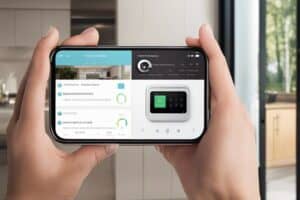Welcome to our comprehensive guide on how you can integrate your smart home devices with home automation platforms. With the rise of smart technology, it’s crucial to ensure that your devices are seamlessly connected to a central automation system. Not only does this enhance the convenience and efficiency of your home, but it also improves security and energy management. In this article, we will walk you through the steps to successfully integrate your smart home devices with your chosen home automation platform, whether it’s Amazon Alexa, Google Home, or another system. We will also highlight the potential pitfalls and precautions to take in order to protect your privacy and security.
Key Takeaways:
- Compatibility: Make sure your smart home devices are compatible with your chosen home automation platform to ensure seamless integration.
- Centralisation: Utilise a centralised hub or controller to manage and control all your smart home devices from one platform.
- Customisation: Take advantage of the customisation options offered by the home automation platform to tailor your smart home system to your specific needs and preferences.
- Connectivity: Ensure that your smart home devices are connected to the same network and are capable of communicating with the home automation platform effectively.
- Security: Prioritise the security of your smart home system by choosing a reliable home automation platform with strong encryption and authentication measures.
How-To: Getting Started with Home Automation Platforms
When it comes to integrating smart home devices with home automation platforms, getting started can feel overwhelming. However, with the right guidance, you can smoothly navigate the process and enjoy the benefits of a fully automated home. Here’s how you can begin your journey towards seamless integration.
Understanding Different Home Automation Platforms
Before you start integrating your smart home devices, it’s essential to understand the different home automation platforms available. Some popular platforms include Amazon Alexa, Google Assistant, and Apple HomeKit. Each platform has its own compatibility requirements and features, so it’s important to research and choose a platform that aligns with the smart devices you currently own or plan to purchase.
Factors to Consider Before Integration
Before diving into the integration process, there are a few factors you need to consider. Firstly, compatibility is crucial. Ensure that your smart home devices are compatible with the home automation platform you’ve selected. Secondly, take into account the security implications of integrating your devices. It’s essential to safeguard your personal data and protect your home from potential security breaches. Additionally, consider the user interface and how easy it is to control your devices using the platform. Lastly, consider the reliability and customer support offered by the platform. The reliability of the platform can have a significant impact on your overall experience. The customer support should be responsive and helpful in case you encounter any issues.
Practical Tips for Seamless Integration
When integrating smart home devices with home automation platforms, there are a few practical tips that can help ensure a seamless experience.
- Ensure all your smart devices are compatible with your chosen home automation platform to avoid any compatibility issues.
- Keep your home automation software and connected devices regularly updated to take advantage of the latest features and security enhancements.
- Label and organise your devices within the home automation app to easily identify and control each device.
- Consider investing in a hub or central controller to streamline the management of all your smart devices from a single interface.
- Test the integration thoroughly to ensure that all devices work as intended in unison, providing a truly seamless and interconnected smart home experience.
This will help you streamline the integration process and ensure a smooth experience with your smart home devices.
Choosing Compatible Smart Devices
When choosing smart devices for your home, it’s crucial to ensure they are compatible with your chosen home automation platform. Look for devices that specifically mention compatibility with popular platforms such as Apple HomeKit, Amazon Alexa, or Google Assistant. This will save you the hassle of dealing with incompatible devices and ensure a smooth integration process.
Setting Up a Centralized Control System
To create a seamless smart home experience, consider setting up a centralized control system such as a smart hub or central controller. These devices act as a bridge between different smart devices, allowing you to control them all from a single interface. This not only simplifies the management of your smart home but also enhances the interconnectivity and automation capabilities of your devices.
Advanced Integration Techniques
When it comes to integrating smart home devices with home automation platforms, there are some advanced techniques that can take your experience to the next level. Here are some tips on how to make the most out of your smart home setup:
- Customizing Device Interactions – This involves creating custom routines and actions for your smart devices, allowing you to tailor their behaviour to your specific needs.
- Optimizing for Voice Control and AI Assistants – By integrating your smart home devices with voice control and AI assistants, you can enjoy a seamless and hands-free experience.
Customizing Device Interactions
When it comes to customizing device interactions in your smart home, the possibilities are endless. You can create custom routines and actions that are tailored to your specific needs, allowing you to automate tasks and streamline your daily life. Whether it’s setting up a custom lighting schedule, or creating specific triggers for your smart security system, the ability to customize device interactions gives you full control over your smart home setup.
Optimizing for Voice Control and AI Assistants
Integrating your smart home devices with voice control and AI assistants can take your home automation experience to a whole new level. By doing so, you can control your smart devices using voice commands, and even integrate them into broader routines and actions. This level of integration not only enhances convenience but also opens up new possibilities for hands-free control over your smart home. Moreover, the growing capabilities of AI assistants mean that the potential for interaction and automation is constantly expanding.
Troubleshooting Common Integration Issues
Integrating smart home devices with home automation platforms can sometimes come with its own set of challenges. Here are some common integration issues you may encounter and how to troubleshoot them.
Connectivity Problems and Solutions
One of the most common integration issues you may face is connectivity problems between your smart home devices and your home automation platform. This can be frustrating, but there are steps you can take to resolve this issue. Firstly, check your internet connection and ensure that all your devices are connected to the same network. It’s also important to check for any firmware updates for your devices, as outdated software can often cause connectivity issues. Additionally, ensuring that your devices are within close proximity to your Wi-Fi router can also improve connectivity.
Updating and Maintaining Your Smart Home Ecosystem
Updating and maintaining your smart home ecosystem is crucial for ensuring smooth integration with your home automation platform. Regularly updating the firmware and software of your smart devices can help prevent compatibility issues and improve overall performance. Additionally, regularly cleaning and maintaining your devices and ensuring they are free from dust and debris can help prevent hardware malfunctions. By taking these proactive steps, you can ensure that your smart home ecosystem remains efficient and reliable.
Conclusion
So, now that you have learned the basics of integrating smart home devices with home automation platforms, you can start implementing these techniques to create a more efficient and convenient living space. By following the tips and guidelines provided in this article, you can ensure a seamless integration of your smart devices with your home automation system. Remember, as you continue to expand your smart home setup, always refer back to resources like the How to Set Up Your Smart Home: A Beginner’s Guide for additional support and inspiration. Embrace the future of home living with confidence and expertise!
FAQ
Q: What is home automation?
A: Home automation involves the use of smart devices and technology to control and automate household systems and appliances, for increased convenience, security, and energy efficiency.
Q: What are smart home devices?
A: Smart home devices are internet-connected gadgets that can be controlled remotely and work together to make your home more efficient and secure. Examples include smart thermostats, smart locks, and smart lighting.
Q: How do I integrate smart home devices with a home automation platform?
A: To integrate smart home devices with a home automation platform, first ensure that the devices are compatible with the platform. Then, follow the manufacturer’s instructions to connect and set up the devices within the platform’s app or interface.
Q: What are some popular home automation platforms?
A: Popular home automation platforms include Amazon Alexa, Google Assistant, Apple HomeKit, and Samsung SmartThings. Each platform has its own ecosystem of compatible devices and offers various features and integrations.
Q: What are the benefits of integrating smart home devices with a home automation platform?
A: Integrating smart home devices with a home automation platform allows for centralised control and automation of all connected devices. This can lead to increased convenience, energy savings, and added security for your home.







